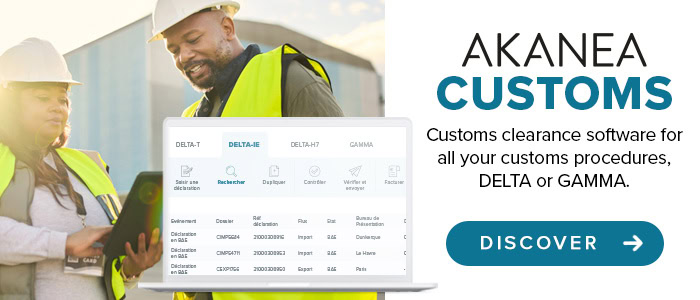
Since 1 January 2021, the United Kingdom has officially left the European Union, thereby reinstating customs borders and associated formalities. However, Brexit is being implemented gradually through a series of steps designed to structure and secure trade flows.
Today, we will focus on one of these key stages: the introduction of the Entry Summary Declaration (ENS).
What is the ENS (Entry Summary Declaration)?
The Entry Summary Declaration (ENS) is a pre-arrival notification concerning the entry of goods into the United Kingdom (UK).
As of 31 January 2025, all businesses importing goods from the European Union (EU) into the UK will be required to submit an ENS declaration, in line with the UK Government’s Border Target Operating Model (BTOM).
This stricter regulation prioritises security as well as sanitary and phytosanitary controls.
When must an ENS be submitted?
You must submit an Entry Summary Declaration (ENS) before the arrival of the goods if you are transporting goods to:
- Great Britain (England, Scotland, and Wales)
- Northern Ireland from Great Britain
- Northern Ireland from outside the EU
Pre-notification may be made up to 30 days before the goods arrive on UK soil. The minimum submission time for your ENS depends on the mode of transport used:
| Mode of Transport | Minimum Submission Time for ENS |
|---|---|
| Containerised maritime freight | At least 24 hours before loading |
| Bulk or break-bulk maritime freight | At least 4 hours before arrival |
| Short sea shipping | At least 2 hours before arrival |
| Long-haul flights | At least 4 hours before arrival |
| Rail and inland waterways | At the time of departure |
| Road traffic | At least 1 hour before arrival |
How to submit an ENS declaration
To submit a declaration, you must first hold a GB/XI EORI number and be registered with one of the following services:
- Safety and Security (S&S GB) service for importing goods into Great Britain.
- Import Control System Northern Ireland (ICS NI) for goods entering Northern Ireland.
- Import Control System (ICS2), which is gradually replacing ICS NI for goods imported into Northern Ireland:
- By air from 1 March 2023,
- By rail, road and sea from 3 June 2024 (depending on the mode of transport).
Once registered, you may submit an ENS declaration via compliant customs software, such as Akanea CUSTOMS.
What does an ENS declaration include?
An Entry Summary Declaration (ENS) must provide, at a minimum, the following information about the goods prior to their arrival at the UK border:
- Details of the consignor and consignee.
- A detailed description of the goods, including the commodity code.
- The mode of transport and other relevant shipment details.
How to amend your ENS declaration?
Your ENS must be complete and accurate at the time of submission. However, should changes occur—such as in the quantity of goods or the estimated time of arrival—you may amend the declaration until the goods reach the UK border. The original declaration remains legally valid, meaning the submission deadlines are not reset following modifications.
Important: Declarations can only be amended, not cancelled.
Best practices for accurate ENS declarations:
- Verify the completeness of all information: ensure all details are accurate and compliant, particularly commodity codes and descriptions.
- Collaborate with your logistics partners: carriers, freight forwarders or agents can often supply crucial information.
- Use automated tools: software like Akanea DOUANE can save time and help avoid human errors.
- In case of difficulty, seek personalised customs advice.


